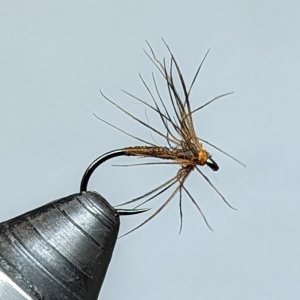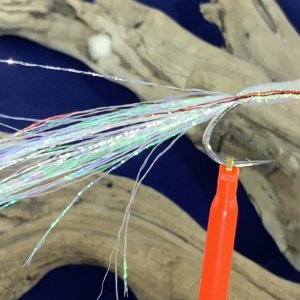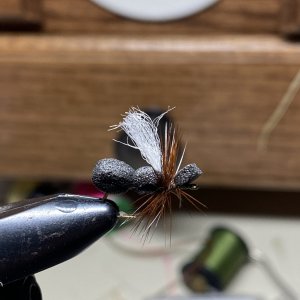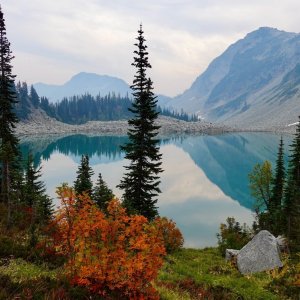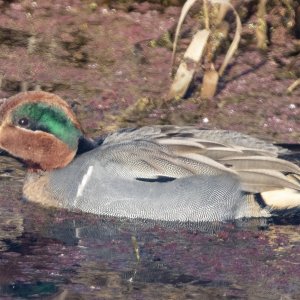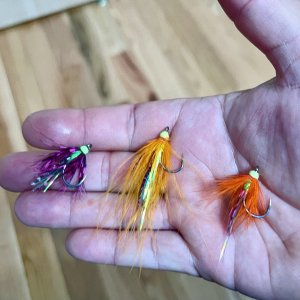All my efforts on the Kalama have been for steellhead only. I didn't think it was worth fishing for anything else except maybe salmon but never trout although sea runs could certainly be a possibility. Beautiful little stream though. Always enjoyed fishing it and had some success, on steelhead, but have had better results elsewhere.
Navigation
Install the app
How to install the app on iOS
Follow along with the video below to see how to install our site as a web app on your home screen.
Note: This feature may not be available in some browsers.
More options
Style variation
You are using an out of date browser. It may not display this or other websites correctly.
You should upgrade or use an alternative browser.
You should upgrade or use an alternative browser.
Kalama river... Where are the trout?
- Thread starter mattsavage
- Start date
I spent a lot of time fishing the Kalama (and driving back and forth from Olympia) when I moved here in 1999. What an amazingly beautiful river! Before I finally got an adult steelhead in the spring of 2000, I caught A LOT of smolts and jacks on muddlers, marabou spiders, and the like. I felt like this was very decent "trout" fishing at the time. In recent years, the smaller ones seem to be much less common, just like everywhere else. I bet the tributary creeks (if any are open anymore) would produce small cutts and smolts, with the occasional surprise dandy.
There IS good trout fishing to be had on the Westside, but it's very seasonal, access sucks, and finding the bigger fish generally requires some walking... sometimes a lot. Despite access getting even worse lately, I still manage some very nice coastal cutts every year. Put in the time, and you'll find them. The great news is they are stupid easy to catch when you fish where they live.
If you want numbers, variety, and quality, head east of the Cascades and beyond. That's what I do when I get the itch for good ol' trout fishing.
There IS good trout fishing to be had on the Westside, but it's very seasonal, access sucks, and finding the bigger fish generally requires some walking... sometimes a lot. Despite access getting even worse lately, I still manage some very nice coastal cutts every year. Put in the time, and you'll find them. The great news is they are stupid easy to catch when you fish where they live.
If you want numbers, variety, and quality, head east of the Cascades and beyond. That's what I do when I get the itch for good ol' trout fishing.
Oliver.Luedtke
Smolt
I just fished the Kalama today. After beginners hole, I fished every pullout until the gate. One difficulty, was most of the river is private property or a straight cliff. This makes access really hard. I tried everything for a trout. Euro, indicator, streamer, dry dropper, and dry. Nothing. When I was on my second to last pullout I did see some kind of fish jump. Today might have been my last attempt, trout fishing on the Kalama river. This does not mean they’re not there, and I know someone who puts in the work will catch them. Good luck.
Hardly surprised that you had a hard time finding a "trout". The young rainbow/steelhead are program so that as the water temperatures drop they seek out over-winter habitats. The trigger for that behavior changes is as the stream temperature drops below the mid 40 degrees (F). The fish seek out what I refer to as complex habitat structure (log jams, boulder complexes, root wads, and "hiding spots") where the fish essentially bury themselves in the spaces those habitats provide as protection from flooding and predators. As that switch in behavior occurs it is not uncommon to see the whole population of those smaller fish moving about into smaller tributaries and those mainstem complex habitats over just a few days.I just fished the Kalama today. After beginners hole, I fished every pullout until the gate. One difficulty, was most of the river is private property or a straight cliff. This makes access really hard. I tried everything for a trout. Euro, indicator, streamer, dry dropper, and dry. Nothing. When I was on my second to last pullout I did see some kind of fish jump. Today might have been my last attempt, trout fishing on the Kalama river. This does not mean they’re not there, and I know someone who puts in the work will catch them. Good luck.
The larger trout (say over 8 inches) tend to drop into the larger pools but may move into shallower areas if feeding opportunities present themselves.
Unfortunately, in many of the western Washington streams habitat changes has limited the amount and stability of those complex structures which limits the capacity of many of those waters to support those juvenile steelhead/trout leading to fewer wild steelhead and trout. In addition some of those same habitat changes have resulted in increased sedimentation and habitat simplication resulting in lower standing crops and diversity of benthic insects,
We have seen significant changes in the hydrographs of our rivers. increased flooding on those altered substrate often resulted in increased gravel scour (several feet of the stream bed gravel may move during a flood event) which essentially grinds up the smaller insects. Those basins with dams often also impact the quality of the downstream habitat by limiting the recruitment of gravel and large woody debris to downstream habitats. Addition how those dams operate and choice to release that store water can effect things downstream. For example a 1970s 2 year study on a north Sound river found that the insect peak densities were more than 8 times higher during relatively stable flow pattern versus one were daily fluctuation were occurring during power peaking operation.
Finally in the anadromous portion of most of our rivers we see much lower escapements of salmon (biomass) than historical which represent a significant decline in nutrients to the system. Bottom line in many of our western Washington river the potential of producing resident trout populations are being assailed from a variety of forces so it is little wonder that current abundance seems to be lower than what may have been historically.
Of those forces limiting populations that one that can be changed immediately with limited impacts on society desires is the harvest regulations.
Curt

